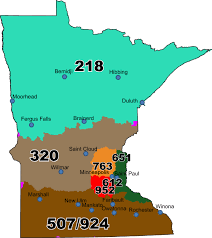Understanding the Dynamics of US States

Importance of US States in the Nation
The United States is a vast and diverse country, composed of 50 states, each with its own unique culture, economy, and political landscape. Understanding the dynamic relationships and characteristics of these states is crucial for various sectors, including business, education, and policy-making. As the nation evolves, the role and influence of individual states are becoming increasingly significant, especially in matters such as climate change, healthcare, and social justice.
Current Affairs and Trends in US States
Recent events have highlighted the diverse approaches states are implementing in response to common national challenges. For instance, during the COVID-19 pandemic, states like California and New York adopted strict public health measures, while others, such as Florida and Texas, opted for more lenient restrictions. This divergence illustrates the states’ autonomy and the varying political ideologies that shape their approaches.
Additionally, economic recovery from the pandemic has been uneven across states. A report from the Bureau of Economic Analysis indicates that states with strong technology and healthcare sectors, like Massachusetts and Washington, are seeing quicker recoveries as opposed to others reliant on tourism, such as Nevada and Hawaii. These economic disparities could influence both interstate migration and future political trends.
Political Implications
The political landscape of US states is also a topic of significant interest, especially with the upcoming midterm elections. States such as Georgia and Arizona have gained notable attention for their changing demographics and political affiliations. The Democratic Party has made inroads in these traditionally Republican regions, leading to a competitive landscape that could determine control of Congress in the near future.
Furthermore, issues such as climate policy are being addressed significantly at the state level. California’s aggressive emissions targets are setting a precedent for other states to follow, while states like Texas face scrutiny for their reliance on fossil fuels amid rising climate emergencies.
Conclusion
As the nation continues to grapple with pressing issues, the role of each US state will play a pivotal part in shaping the future of policies and societal norms across the country. Understanding the unique characteristics, challenges, and growth opportunities presented by each state offers valuable insights into the collective path forward for the United States. As demographics shift and new challenges arise, the evolution of individual states will remain a critical component in the broader national framework.









